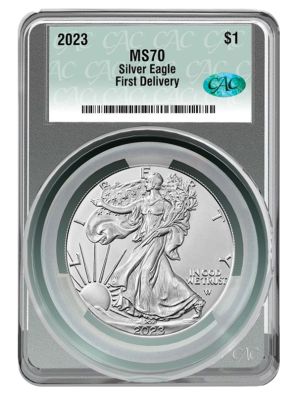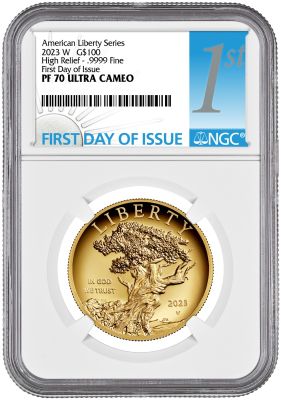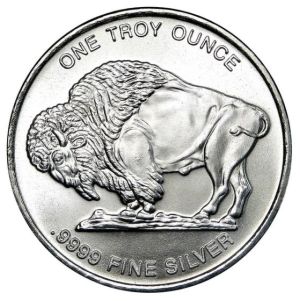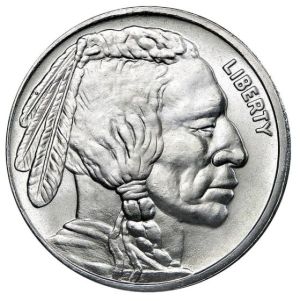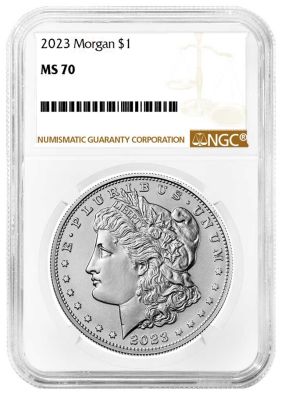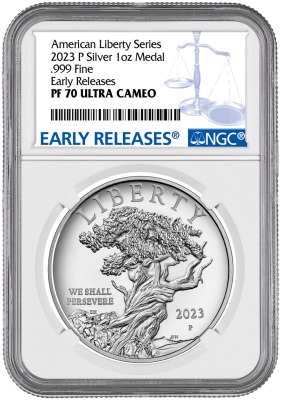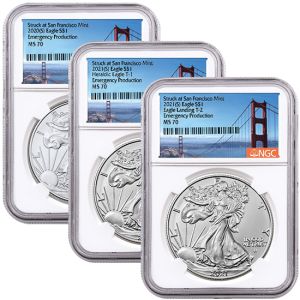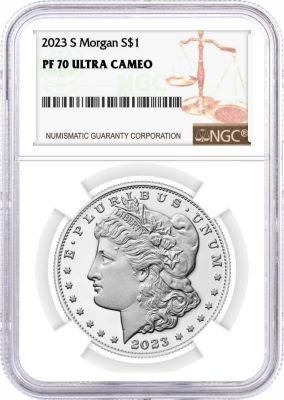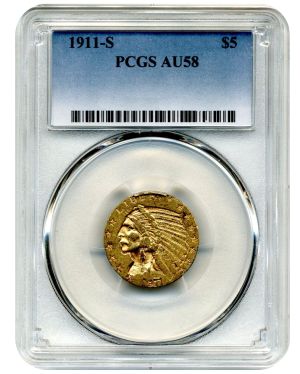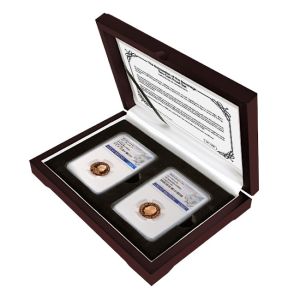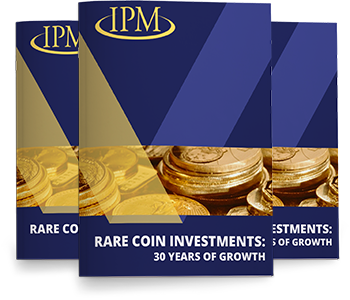Are Graded Coins Worth More?

Are Graded Coins Worth More and Is It Important to Grade Your Coins?
Whether you simply refer to it as grading, certifying, rating, slabbing, or encapsulating, the importance of grading your coins can no longer be downplayed. But the question is; are graded coins worth more? Well, not necessarily. However, it's always important to know how to get a coin graded and grade your coins if it's worth it.
If we are all honest with ourselves, coins are very complicated items. They have very many different features and factors that play a crucial role in determining their ultimate value. And even though their values are based on their rarity and conditions, it would be unfair to say that the nicer the condition, the more worth the coin is. Well, what about issues such as authenticity, fineness, or the existence of certain problems? This is exactly where coin grading comes in handy. Coin grading is essential in keeping grades more consistent and objective across the entire numismatics industry while also protecting buyers from unscrupulous salespeople.
So, are graded coins worth more? The shortest answer to this is not necessarily. It is a misconception to think that your coin will automatically worth more just because it is graded or worth much less because it is ungraded. The main idea behind grading your coin is to certify it and to make it a lot easier for the buyer and the seller to comfortably agree on the value of the coin now that it's been graded through a third-party grading system and its value and authenticity determined.
In this brief but insightful article, we'll look at the importance of grading your coins and why sometimes it's not even worth bothering.
The Importance of Grading Your Coins
If you're new to the rare coin collecting marketplace, it may sound so surprising that no part of the rare coin collecting industry has undergone a greater change than coin grading. Before the introduction of the current coin grading system, all coins were categorized as either used or new (mint state). Unfortunately, this categorization offered little, if any, useful information, especially when looking at the coin's value.
As a result, the phrase "graded coin" was coined to essentially refer to a coin that has been evaluated by experts to determine its condition, authenticity, rarity, and of course, value. To be graded, the experts must analyze its strike, coloration, surface preservation, luster, and eye appeal. The main objective of grading a coin is to offer an unbiased value of the coin, as well as to verify its condition and authenticity.
In other words, grading is there to ensure that the coins are in fact, what the seller says it is. If anything, unscrupulous sellers can sell the coins for far more than they are worth if there's no grading system.
The Grading Process and how it Works
In the United States, coins are graded based on what is referred to as the Sheldon Coin Grading scale. This is a 1 to 70-point grading scale that was developed by William Sheldon in 1949. The basic idea here is that a coin with a rating of 70 would be worth 70 times as much as a coin with a rating of 1. As such, 1 is the lowest rating a coin can have based on its condition and rarity while 70 is the highest rating based on similar factors and many others. In short, 1 is ranked poor while 70 is the elusive Mint State.
Coin Grade Definitions

Here is a brief look at the definitions that you have to know whether using a professional grading system or looking at how to grade coins yourself.
P-1 (Poor) - Has unidentifiable mint marks and dates
FR-2 (Fair) - Worn but smooth and not as bad as P-1
AG-3 (About Good) - You can see the marks and date, though some parts are worn
G-4 (Good) - Important features are noticeable from the outlines
G-6 (Good Plus) - Features clearly noticeable with complete rims
VG-8 (Very Good) - Clear legible legends and little wear on the important details
F-12 (Fine) - Distinct design elements and rim and moderately worn
VF-20 (Very Fine) - Legends are completely clear
VF-30 (Good Very Fine) - Legends are completely clear, light wear on high points, and details of devices
EF-40 (Extremely Fine) - Devices are bold and clear
XF-45 (Choice Extremely Fine) - Legends and devices are clear and sharp, and offers strong eye appeal
AU-50 (About Uncirculated) - Some luster remains but devices and legends are sharp and clear
AU-55 (Good About Uncirculated) - Mint luster and legends are sharp and clear
AU-58 (Choice About Circulated) - Excellent eye appeal, appears uncirculated except for very minute wear on high points
MS-60 (Mint State Basal) - Uncirculated but has poor tone and ding marks
MS-70 (Mint State Perfect) - Full luster, excellent eye appeal, and no flaws visible even at 8x magnification.
Grading Companies and How Much it Costs to Grade
You're probably wondering how you can get a coin graded. Well, many companies offer coin grading services today but two main companies that are preferred by coin collectors. These companies are Professional Coin Grading Service (PCGS) and Numismatic Guaranty Corporation (NGC).
There are costs that you'll incur if you want to get your coins graded. For you to send your coins to PCGS or NGC, you must be a member of the submission club with an annual membership fee ranging from $39 to $69 and may even go up depending on the services that you require. Besides the membership fees, there's a fee that you have to pay to get your coin graded and this may depend on how valuable your coin is.
For example, the cost of grading a coin worth $150 is $20 while grading a high-end rare coin worth more than $30,000 can set you back $125. That being said, it makes more sense to grade an expensive coin than to grade a common low-value coin. You also have to factor in the costs of shipping the coin as well as insurance costs. It can take a week to ship the coin each way and sometimes several weeks to grade the coin, so time should also be an integral factor to look at when considering the cost of grading a coin.
So, Is It Worth Grading a Coin?
Honestly speaking, not all coins are worth grading. It all depends on the current worth of your coin and whether grading it would add any value to it. It certainly wouldn't make any sense to spend more money grading a low-value coin if grading it isn't going to add any tangible value to it.
So, if you do not stand to gain any monetary value from grading the coin, then there's no need unless you want to prove its authenticity. And if you've been thinking about how to grade coins yourself, just remember that getting coins graded is no mean task. It's a skill that requires significant technology and may take many years of dedication and hard work to master. As such, the best way to grade your coins is by seeking the services of professional graders.


